Presentation
Recent onset of dry cough, severe dyspnea, fever and fatigue.
Patient Data
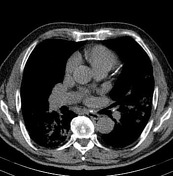

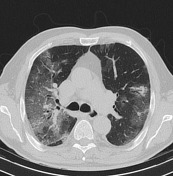

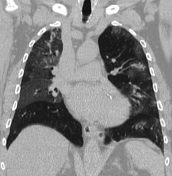

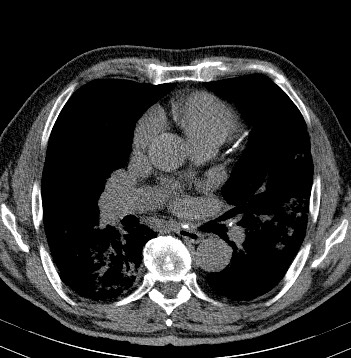
Findings:
Quality: no artefacts
coronary sclerosis, mild aortic sclerosis
no significant mediastinal lymphadenopathy
Pulmonary findings:
- extensive patchy bilateral multi-lobar ground-glass opacities (GGO)
- predominantly peripheral distribution in the left lung, peripheral and central distribution in the right lung
- partial consolidations along the bronchovasular bundles surrounded by ground-glass opacities (GGO)
- superimposed inter-and intralobular septal thickening (crazy-paving pattern) in the right lower lobe
- bilateral vascular dilatation
Additional findings:
- pulmonary nodule (18mm) in the anteromedial segment of the left lower lobe
- no pleural effusions
Impression:
Findings are compatible with atypical pneumonia.
In view of the patient's symptoms and the current COVID-19 pandemic, this is indicative of COVID-19 pneumonia.
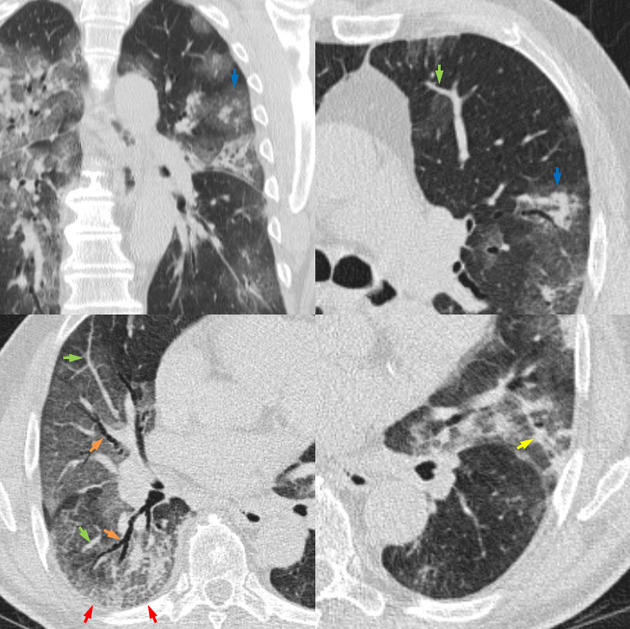
Key findings:
- extensive ground-glass opacities (GGO) with bilateral and multi-lobar distribution
- crazy paving pattern (red arrows)
- combination of consolidations and surrounding ground-glass opacities also referred to as "Halo sign" (blue arrows)
- vascular dilatation (green arrows)
- fibrous bands or streaks (yellow arrow)
- air bronchogram (orange arrows)
Case Discussion
This case illustrates a spectrum of findings in COVID-19 pneumonia:
- extensive ground-glass opacities (GGO)
- bilateral and multi-lobar distribution
- crazy-paving pattern
- combination of ground-glass opacities and consolidation
Real-time polymerase chain reaction (PCR) after pharyngeal swab was positive for SARS-CoV-2 virus RNA.
The patient has been put under isolation and referred to the intensive care unit (ICU).




 Unable to process the form. Check for errors and try again.
Unable to process the form. Check for errors and try again.